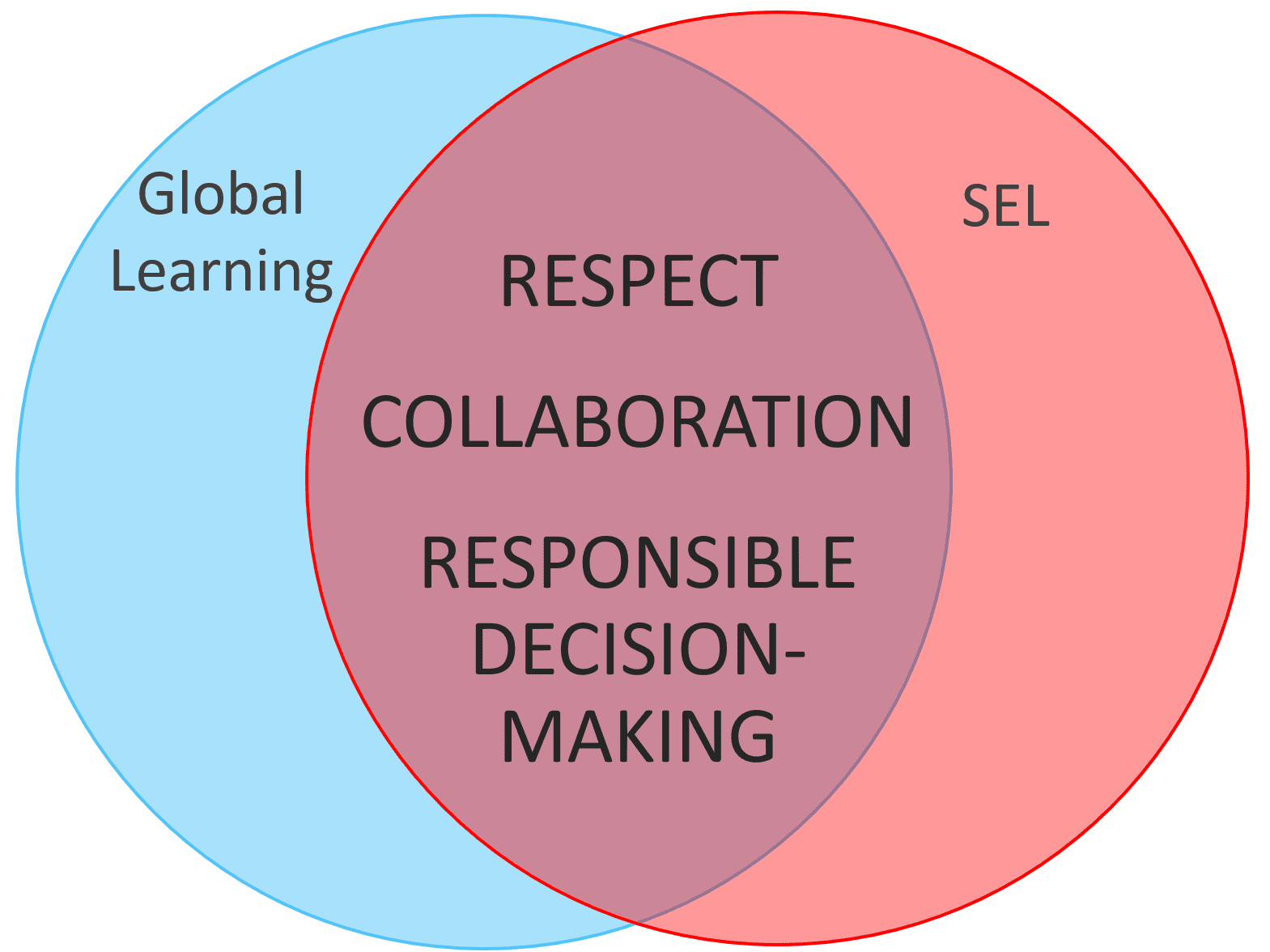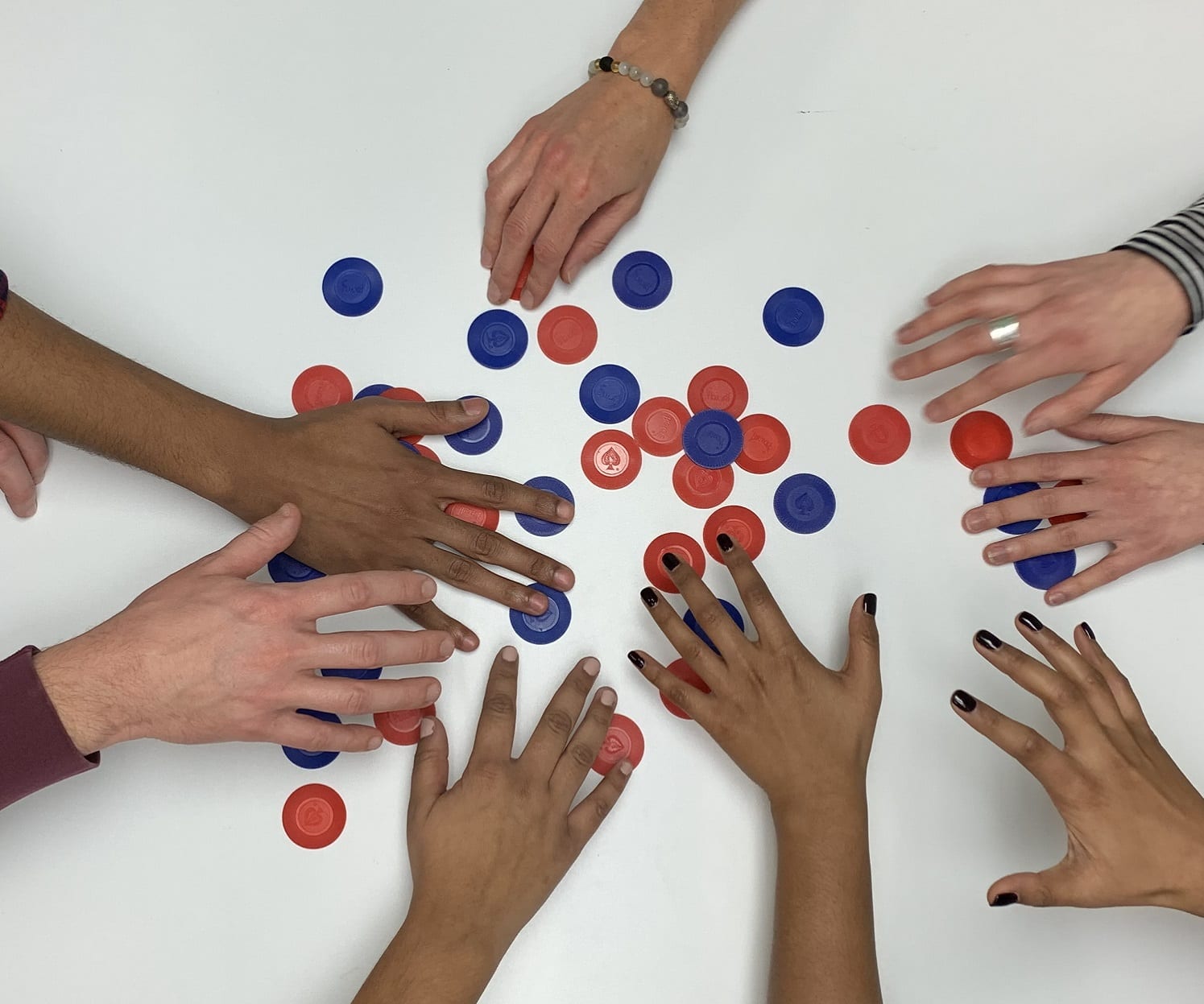Each year, the planet becomes more connected and our daily lives more diverse. Social emotional learning (SEL) is here to help students navigate global society in a positive way that is beneficial to both the students themselves, and our global society as a whole.
Every one of us lives in a globally connected world – everything from the food we eat, the products we buy, and the problems that originate in one place but have the potential to touch populations across the globe.
As our students learn about both the good and the bad of these global connections, they must have skills in place to positively engage with them.

In this post, I’ll show how utilizing SEL in the classroom complements teaching global citizenship, using a resource consumption game that incorporates both approaches.
What is SEL?
Social and emotional learning is meant to put more focus on kids’ psychological health in the classroom. The result of robust SEL integration is students who can achieve goals, understand and manage emotions, build empathy, forge relationships, and make responsible decisions. SEL can be applied while teaching any topic at any grade level.
What is Global Citizenship Education?
Just as students are a part of local communities like their school and town, they are also members of our shared global community. Global education aims to show students how they are connected to global society. Global citizenship education takes it a step further, engaging students in activities that have a positive impact on global issues.
Global Citizenship Game: One for All
One for All is a game about resource consumption – will participants work towards their own short-term gain, or for the benefit of all? Will they be able to control their individual impulses, or will impatience or greed win out? How can the SEL core competencies help students navigate this model of real-world conflict?
Here’s how the game is played: You start out with students in a circle around scattered poker chips that represent shared resources. Each person’s goal is to get 10 chips, because 10 chips can be traded in for a piece of candy. People may collect chips, and chips in the shared pool increase, based on a number of factors, but suffice to say, it takes strategy and cooperation for everyone to “win.”

Typically, the players take all of the chips in the first round, completely emptying the pool, and the game is over. But let students try again. They might empty the pool again, and again, no one gets candy. But eventually better communication is incorporated into the game and students start to modify their behaviors. Ultimately, there are various strategies that would ensure everyone “wins.”
Social-Awareness – An Important SEL Competency
Tackling global challenges requires that stakeholders first agree there is a problem. In the game, it means a shared understanding that everyone deserves 10 chips and the prize. The SEL competency of social-awareness includes not only understanding where others are coming from, but demonstrating compassion for other people and having concern for their well-being. Getting or not getting a piece of candy, the prize in this game, might seem insignificant. But we ask students to think about real-world situations that fit into a similar model. It doesn’t take much thought to find issues from around the world that would benefit from stakeholders showing empathy and concern for the others’ well-being.
Using Responsible Decision-Making to Strategize
Once it’s decided that everyone deserves candy, students need to figure out how to make that happen. Responsible decision-making, another of SEL’s core competencies, is key as they strategize. This includes: anticipating and evaluating the consequences of one’s actions, reflecting on one’s role to promote personal, family, and community well-being, evaluating personal, community, and institutional impacts, and identifying solutions for personal and social problems. There are many examples from around the world of different groups or countries competing for, or sharing, resources. And the ability of these global players to anticipate, recognize and evaluate the broader consequences of their actions is paramount.
Practicing Self-Management in the Classroom
Throughout the game, students are also asked to reflect. How does it feel when someone takes more than you? Can you relate this to anything you’ve experienced at home or at school? How students react if and when the game doesn’t go their way, provides an opportunity to practice self-management, yet another SEL core competency. Students must be able to manage their emotions in the game – they can’t help find a strategy to benefit all if they storm out of the circle. They must also show self-discipline in order to follow through on the strategy decided on by the group, rather than follow their individualistic impulses. As a global citizen, self-management cannot be overlooked. There are bound to be misunderstandings and missteps when people from different backgrounds and cultures, who are speaking different languages and from different places, come together. Managing one’s own emotions can help ensure productive outcomes for all.
Pairing SEL and Global Ed
Both global learning and SEL aim to foster respect, collaboration and responsible decision-making, making them a natural pairing in the classroom. So as we foster future global citizens, who will work together for the betterment of our world, social emotional learning must be included in our instruction.




